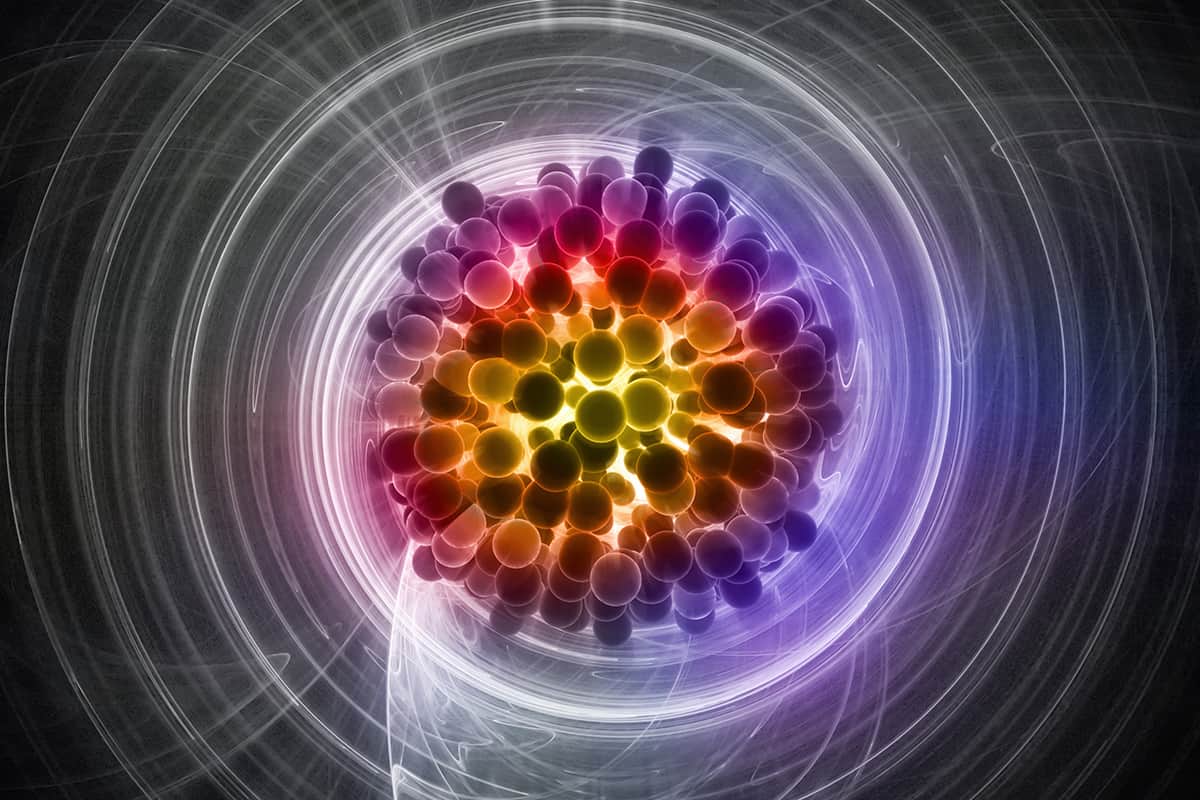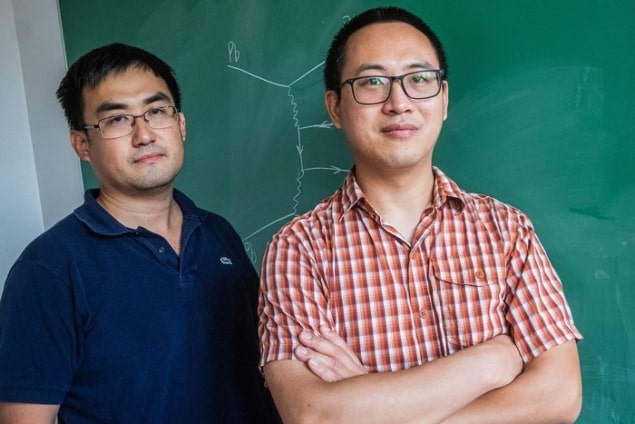Photon–photon collisions could shed light on physics beyond the Standard Model
01 Oct 2021
A new way of studying matter that is created when photons collide has been developed by CERN’s Compact Muon Solenoid (CMS) collaboration. Their experiment, done on the Large Hadron Collider (LHC), sheds new light on a mystery surrounding the nature of high-energy collisions between heavy ions. While the team’s results are consistent with the expectations of the Standard Model of particle physics, they hope that further observations could lead to observations that could challenge our conventional understanding of physics.
When a high-energy photon collides with matter it will often transform into an electron–positron pair – a process that involves the energy of the massless photon being converted into the masses of the pair. A similar conversion occurs when heavy ions are smashed together at high energies at facilities like the LHC. These ions are surrounded by clouds of photons and when these photons collide with each other, they can also produce pairs of particles.
In the past few years, Shuai Yang at Rice University and colleagues on the STAR collaboration have been studying these energy-to-mass conversions using the Relativistic Heavy Ion Collider (RHIC) at Brookhaven National Laboratory in the US.
Quark–gluon plasma
A primary aim of RHIC is to smash ions together to create a “quark–gluon plasma” (QGP), which is an extremely hot state of matter in which quarks and gluons, normally stringently bound within nucleons, have enough energy to exist independently. Much to the surprise of Yang and colleagues, it appeared that particles produced by photon–photon collisions affect the properties of the QGP. This was not expected because the photon–photon collision process and the particles in produces are governed by the electromagnetic force, which is much weaker than the strong force that mediates the QGP.
To explore this effect in more detail, the CMS collaboration (which includes Yang) has studied “ultraperipheral” heavy ion collisions at the LHC. These collisions occur when ions narrowly miss each other but pass close enough for their photon clouds to collide. The closer the near miss, the more likely it is that the ions will be excited into higher energy states and then decay by emitting neutrons. Detecting these neutrons provides the team with an accurate measure of ion separation distances.READ MORE

In the photon–photon collisions that resulted, muon–antimuon pairs are generated and the particles typically fly off in opposite directions. As the ion separation distances became smaller, the CMS team found that the angular distribution of the particles was affected by quantum interference between the photons prior to the collision – something that is predicted by the Standard Model of particle physics. According to Yang, this interference is enhanced at smaller separation distances because close proximity cause the photon clouds to move away from their host ions in directions perpendicular to the ion beams.
According to the researchers, this effect can explain most of the QGP anomalies mass first measured by the STAR collaboration. However, Yang and his CMS colleagues believe that future observations of these photon collisions could reveal that the anomalies are related to new physics beyond the Standard Model, which would be a ground-breaking observation.
The research is described in Physical Review Letters.
Sam Jarman is a science writer based in the UK01 Oct 2021
A new way of studying matter that is created when photons collide has been developed by CERN’s Compact Muon Solenoid (CMS) collaboration. Their experiment, done on the Large Hadron Collider (LHC), sheds new light on a mystery surrounding the nature of high-energy collisions between heavy ions. While the team’s results are consistent with the expectations of the Standard Model of particle physics, they hope that further observations could lead to observations that could challenge our conventional understanding of physics.
When a high-energy photon collides with matter it will often transform into an electron–positron pair – a process that involves the energy of the massless photon being converted into the masses of the pair. A similar conversion occurs when heavy ions are smashed together at high energies at facilities like the LHC. These ions are surrounded by clouds of photons and when these photons collide with each other, they can also produce pairs of particles.
In the past few years, Shuai Yang at Rice University and colleagues on the STAR collaboration have been studying these energy-to-mass conversions using the Relativistic Heavy Ion Collider (RHIC) at Brookhaven National Laboratory in the US.
Quark–gluon plasma
A primary aim of RHIC is to smash ions together to create a “quark–gluon plasma” (QGP), which is an extremely hot state of matter in which quarks and gluons, normally stringently bound within nucleons, have enough energy to exist independently. Much to the surprise of Yang and colleagues, it appeared that particles produced by photon–photon collisions affect the properties of the QGP. This was not expected because the photon–photon collision process and the particles in produces are governed by the electromagnetic force, which is much weaker than the strong force that mediates the QGP.
To explore this effect in more detail, the CMS collaboration (which includes Yang) has studied “ultraperipheral” heavy ion collisions at the LHC. These collisions occur when ions narrowly miss each other but pass close enough for their photon clouds to collide. The closer the near miss, the more likely it is that the ions will be excited into higher energy states and then decay by emitting neutrons. Detecting these neutrons provides the team with an accurate measure of ion separation distances.READ MORE

In the photon–photon collisions that resulted, muon–antimuon pairs are generated and the particles typically fly off in opposite directions. As the ion separation distances became smaller, the CMS team found that the angular distribution of the particles was affected by quantum interference between the photons prior to the collision – something that is predicted by the Standard Model of particle physics. According to Yang, this interference is enhanced at smaller separation distances because close proximity cause the photon clouds to move away from their host ions in directions perpendicular to the ion beams.
According to the researchers, this effect can explain most of the QGP anomalies mass first measured by the STAR collaboration. However, Yang and his CMS colleagues believe that future observations of these photon collisions could reveal that the anomalies are related to new physics beyond the Standard Model, which would be a ground-breaking observation.
The research is described in Physical Review Letters.
Sam Jarman is a science writer based in the UK
from physicsworld.com 8/10/2021

Δεν υπάρχουν σχόλια:
Δημοσίευση σχολίου